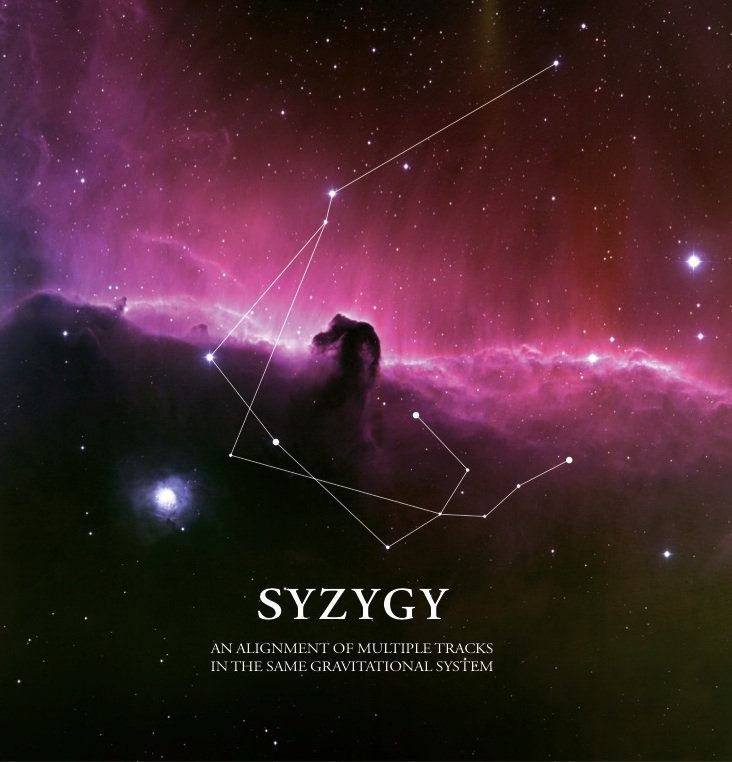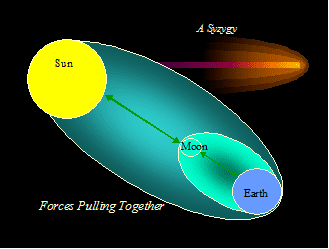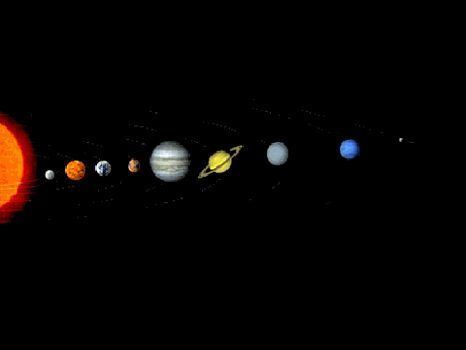 | ||
In astronomy, a syzygy (/ˈsɪzᵻdʒi/; from the Ancient Greek σύζυγος suzugos meaning, "yoked together") is a straight-line configuration of three celestial bodies in a gravitational system.
Contents

Overview

The word is often used in reference to the Sun, Earth, and either the Moon or a planet, where the latter is in conjunction or opposition. Solar and lunar eclipses occur at times of syzygy, as do transits and occultations. The term is often applied when the Sun and Moon are in conjunction (new moon) or opposition (full moon).

The word syzygy is often loosely used to describe interesting configurations of planets in general. For example, one such case occurred on March 21, 1894 around 23:00 GMT, when Mercury transited the Sun (as could have been seen from Venus), and Mercury and Venus both simultaneously transited the Sun as seen from Saturn. It is also used to describe situations when all the planets are on the same side of the Sun although they are not necessarily in a straight line, such as on March 10, 1982.

On June 3, 2014, the Curiosity rover on Mars observed the planet Mercury transiting the Sun, marking the first time a planetary transit has been observed from a celestial body besides Earth.
Occultations, transits, and eclipses
Syzygy sometimes results in an occultation, transit, or eclipse.

Transits and occultations of the Sun by Earth's Moon are called solar eclipses regardless of whether the Sun is completely or partially covered. By extension, transits of the Sun by a satellite of a planet may also be called eclipses, as with the transits of Phobos and Deimos shown on NASA's JPL photojournal, as may the passage of a satellite into the planet's shadow, as with this eclipse of Phobos. The term eclipse is also used more generally for bodies passing in front of one another. For example, a NASA Astronomy Picture of the Day refers to the Moon eclipsing and occulting Saturn interchangeably.
Tidal variation
Syzygy causes the bimonthly phenomena of spring and neap tides. At the new and full moon, the Sun and Moon are in syzygy. Their tidal forces act to reinforce each other, and the ocean both rises higher and falls lower than the average. Conversely, at the first and third quarter, the Sun and Moon are at right angles, their tidal forces counteract each other, and the tidal range is smaller than average. Tidal variation can also be measured in the earth's crust, and this may affect the frequency of earthquakes.
